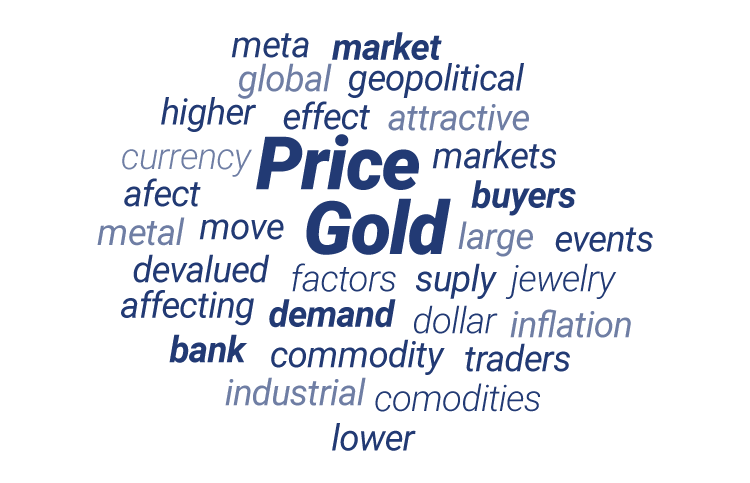What Moves Gold’s Price?
From ancient civilizations to the modern age, individuals have relied on Gold for beauty, industrial uses, and as a store of value. This precious metal’s history has been an investor’s go-to during times of economic instability, political upheaval, and even during rallying markets.
Given its high global demand, Gold’s price fluctuations may be triggered by a large number of global factors such as inflation, supply, demand, and even trader sentiment, keeping the XAU/USD continuously on the move.
Factors Affecting Gold’s Price
Gold’s price is, in many ways, influenced by the same factors that affect other commodities. However, its wide-scale popularity and stored value increases its exposure to greater gains, as well as losses.
The key factors affecting gold’s price are:
- Inflation- When a currency experiences greater than normal inflation, traders may prefer to store their value in gold since it is relatively stable and has historically held its value well.
- Supply- Like other commodities, supply has the power to lower Gold’s price if a market becomes saturated or raise the price if scarce. New Gold discoveries increase availability where there may have been a shortage.
Unlike some consumable commodities such as Oil and Corn, Gold is still tradeable even after being used. If the price goes higher, it is more advantageous for miners to mine for new Gold. If the price drops, they may not mine as much resulting in less supply in the market. - Demand- Demand for Gold can be triggered by the demand for the metal in jewelry, industrial uses, and trading. If demand is greater than the supply, the price may go up. On the other hand, if demand is low and the market has a surplus, the price may drop to attract buyers or it may rise depending on buyer demand.
- The US Dollar- Gold is priced in dollars making the US currency a player in how attractive the commodity is to foreign inventors. If someone trades in Euros, Pounds, or another currency, a devalued USD may make the commodity more attractive while a stronger dollar may have the adverse effect.
- Geopolitical events- As a global metal, geopolitical events can have an effect on the supply of this precious metal. Events can also affect the movement of currencies, changing the relative value of Gold and potentially sending large amounts of traders to or from this commodity.

Gold as a Currency Stabilizer
Gold is used by various countries’ central banks to stabilize the currency. Having large stores of Gold in a country’s central bank system is seen as a tool for backing the value of their money with a hard commodity.
When a currency becomes devalued, the government may authorize a large purchase of gold for its central bank. At times these deals will be large enough to impact the Gold market since traders recognize large quantities being purchased or transferred and therefore being removed from the open market for trade, triggering a price shift.
When executed properly by central banks, it offers a quick fix to the currency by instilling trust once again.
Gold as a Competitive Commodity
As we have seen, Gold does not move based on the demand for consumption, like the Oil or Coffee markets. Supply and demand is influenced by traders, jewelry buyers, and even governments.
When trading this commodity, it is beneficial to review all aspects of the market and consider how various world events can either move Gold’s price higher or lower.
